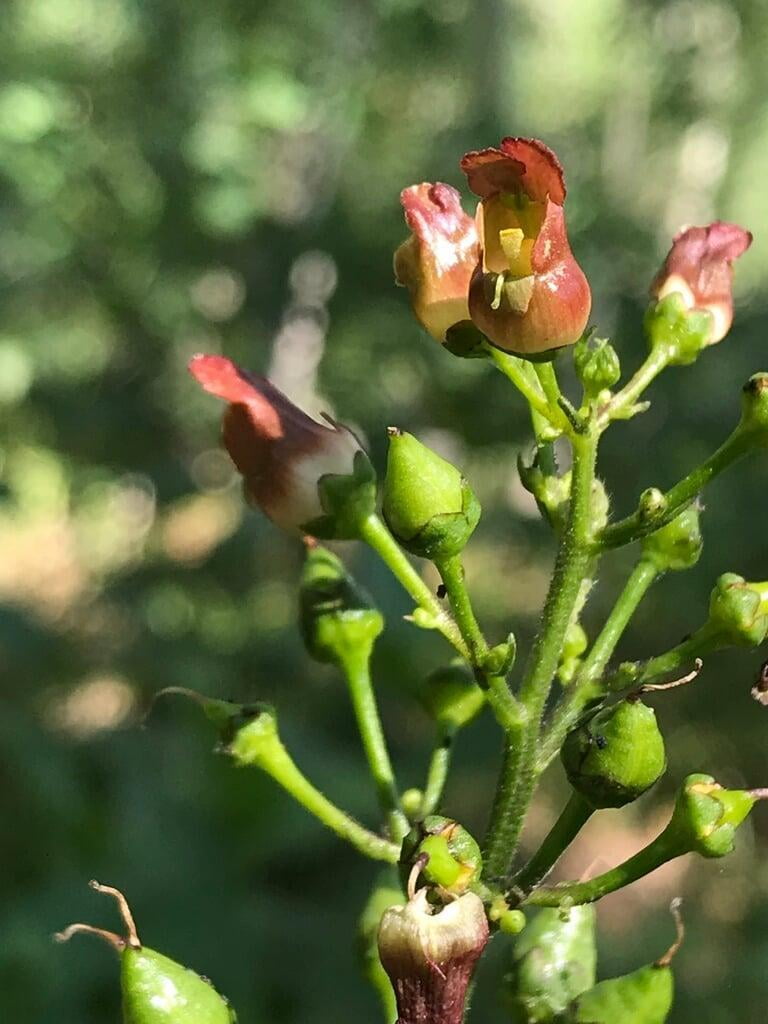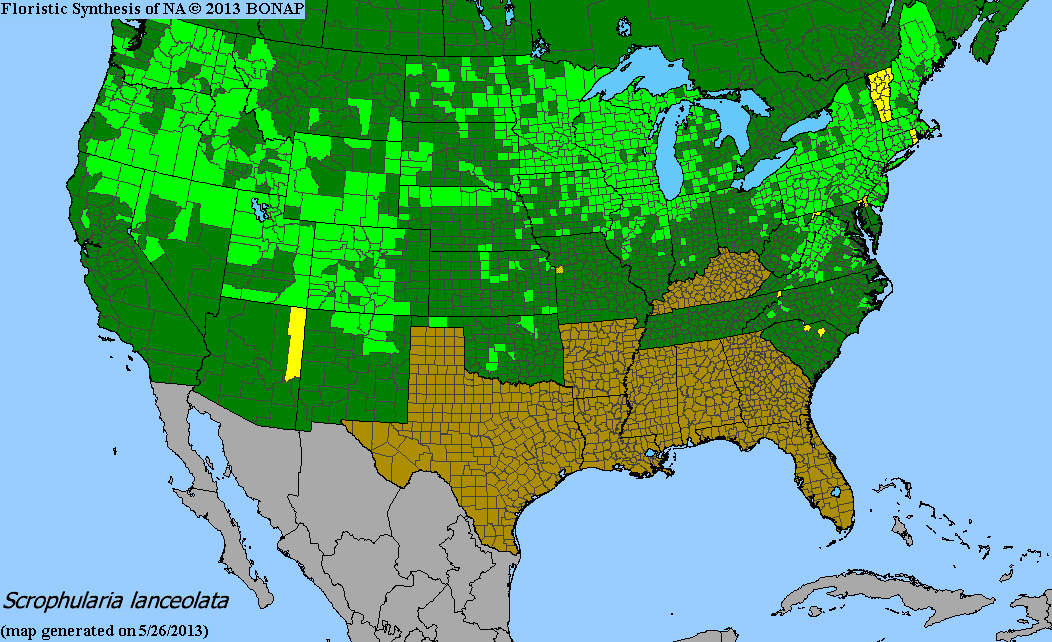Scrophularia Lanceolata
Early figwort Description:
Scrophularia lanceolata, commonly known as lanceleaf figwort, is a perennial herbaceous plant native to North America. It typically grows to a height of 2-6 feet and has a clumping habit.
The leaves of Scrophularia lanceolata are lance-shaped with toothed edges, and grow opposite each other on the stem. The flowers are small and greenish-brown, arranged in clusters at the top of the stems. They bloom in mid-summer to early fall and are followed by small, round, green seed pods.
Scrophularia lanceolata prefers moist soils and partial to full shade, and is often found growing in woodlands or along streambanks. It is an important plant for pollinators, attracting bees, butterflies, and other insects with its nectar-rich flowers. It also has medicinal properties, with the roots and leaves traditionally used by Native Americans to treat a variety of ailments.
This plant is easy to grow from seed and can be a good choice for naturalized areas or shade gardens. With its unique flowers and medicinal value, Scrophularia lanceolata is a popular choice for gardeners and herbalists alike.
Native Range:
Lance-leaf figwort is found across the United States with a range from California to Maine. This plant is found in most states with the exception of the Southeastern United States.
Standard Plant Information:
Plant height: 2' - 6'
Bloom time: June - July
Preferred habitat: Does well in part shade to full sun. Often found in open woods, thickets, and open fields.
Sowing:
For most homeowners, the best option is to scatter seed on the ground by hand broadcasting at a minimum of 16-64 pls ounces per acre. For even coverage, we recommend that you broadcast seed in perpendicular rows across the site to ensure even coverage.
You’ll want to broadcast any grass seed first, which will get raked into the soil lightly. Next, it is ideal to mulch the area lightly with either a clean (no seed) straw or preferably with our native Little Bluestem straw, sold at our retail garden centers. After a light mulching is complete, now it’s time to broadcast your native wildflower seeds, which should not be raked into the soil. A good rain or watering is sufficient to cover the seed.
Planting:
Simply dig a hole in the soil slightly larger than the plant’s roots. Ensure that the soil line of the plant is maintained during the transfer (i.e. the plant should be at the same level with the ground as it was in the pot). Pack any loose dirt back around the plant and make sure you water it well the same day to ensure it has the best chance of survival.







